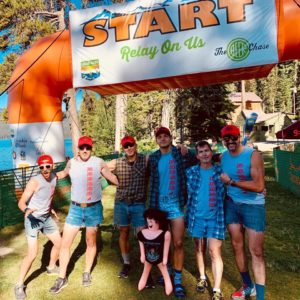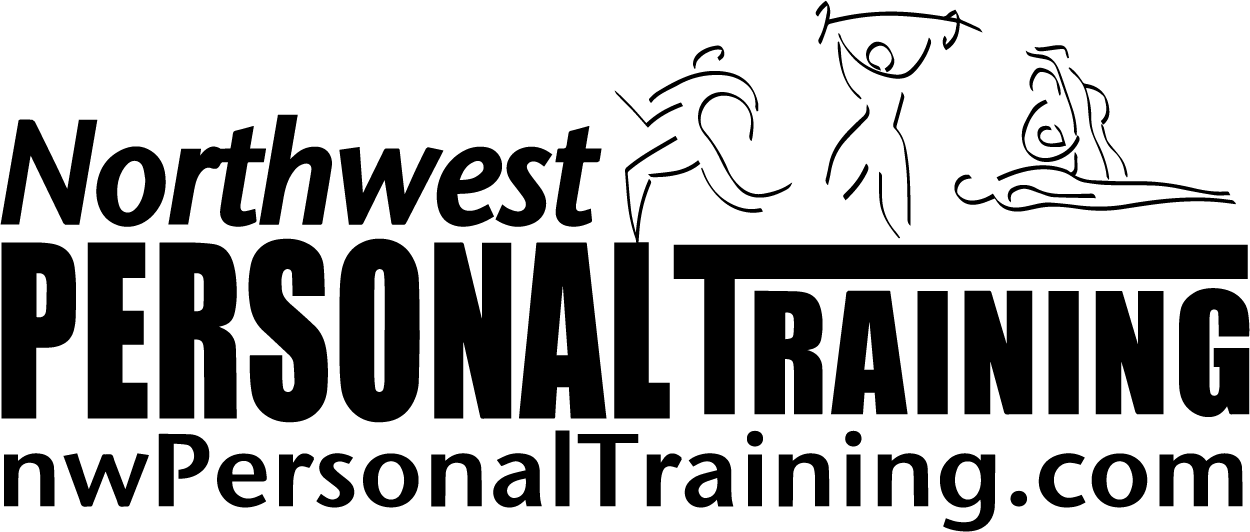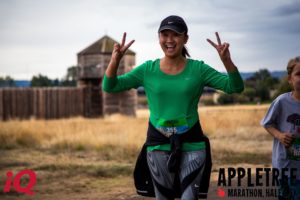 In the next week, over 12,000 local runners will tackle the Hood to Coast Relay event. Each team consists of 12 runners in 2 vans who each complete 3 legs to cover the 199-mile route. Relay events have become more popular and include events such as Cascade Lakes Relay, Ragnar Relays and Gorgeous Relays all providing an opportunity for friends and family to do something fun and active together. Recently, one day relays have become more popular boasting a shorter route, smaller team requirements, only one van needed and no sleepless nights.
In the next week, over 12,000 local runners will tackle the Hood to Coast Relay event. Each team consists of 12 runners in 2 vans who each complete 3 legs to cover the 199-mile route. Relay events have become more popular and include events such as Cascade Lakes Relay, Ragnar Relays and Gorgeous Relays all providing an opportunity for friends and family to do something fun and active together. Recently, one day relays have become more popular boasting a shorter route, smaller team requirements, only one van needed and no sleepless nights.
Regardless of which relay option you choose, your event could be one of the best experiences of your life or the most miserable. Here’s some tips to assure you have a blast!
Don’t forget to sign up to automatically receive my latest blog post in your inbox!
Right at the top of the page.
Pace yourself
Remember that you have three legs to run! You don’t want to give it everything you have during your first segment and have nothing left to give during your final two legs. Also be sure to take it easy if you have any steep downhills – they can really beat up your leg really hurting your ability to perform later in the day.
Avoid stiffening up
The hardest part for many athletes in a relay race is running and then having to immediately get in a van and sit to get to the next transition spot. Take the time after your segment to cool-down, walk, stretch and release. Be sure to bring a mat, foam roller, stretching strap, and/or massage stick. It can make a world a difference to how you and your whole team feels. Likewise, as you’re waiting for your teammate to arrive at your transition spot and start your leg, walk around and do some range of motion drills to warmup your legs and keep your hips, knees and ankles loose. Avoid going from sitting in the van to an all-out race pace!
Fuel up
Be sure to drink water to stay hydrated during the event. You’re also going to need to eat throughout the event to keep your energy levels up but you don’t want to consume anything that will negatively affect your ability to run. Hopefully you’ve been practicing what type of fuel your body can tolerate. Typically eating smaller portions of foods that are easier to digest is best. Recovery drinks are great to consume right after your leg to replenish nutrients and electrolytes.
Sleep when you can
Another challenging part of relay races is having to pull all-nighters! Bring headphones, an eye mask, pillow and/or a small inflatable mat to increase your comfort level and ability to block out outside noise and stimulus so you can catch some shut-eye when possible. Even 20 minutes can do wonders!
Be in the know
Hopefully you’ve done your research. You should understand your legs. Are they uphill, downhill, flat or a combination? What is the distance of each leg and total distance you’ll need to cover? Be sure to stimulate the terrain and distance in your training. Practice two-a-day runs to condition your body to run multiple times per day. Practice running at night. If you haven’t done this, it’s a bit too late to start now for Hood to Coast. Do the best you can this year but next year, establish a plan to assure you are 100% prepared.
Now most important….what’s your team theme and is your costume ready?! Enjoy this wonderful adventure and the comradery with your team-mates!
Yours in health & fitness,
Sherri McMillan
PEACEHEALTH APPLETREE Boston-Qualifying Marathon, Half Marathon & Sunset 5K.
September 14th, 2019
This “Run Through History” will take you on a flat, fast and scenic course through Fort Vancouver, Officer’s Row, the Army Barracks, Pearson Airport – the oldest operating airport in the USA, the Historical Old Apple Tree, along the magestic Columbia River and many other historical vantage points. There’s so much to see that the miles will fly by!


